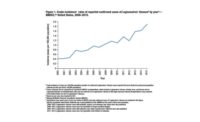Implementing a water management program is probably the most daunting and crucial task of ASHRAE 188. Fortunately, there is a formulaic process for doing so, illustrated below.
Establishing a program team
Choosing a team is critical for the program’s success, as the members will be responsible for developing and implementing it. At a minimum, team members should be able to oversee and communicate the program; identify control locations and limits; take corrective actions; monitor, document and confirm program performance; and be knowledgeable about the building water systems.
Building owners and administrators, facilities engineers, infection prevention experts, infectious disease clinicians, microbiologists, safety officers, industrial hygienists, risk managers, engineering consultants, and health officials are all good choices. Keep in mind that you may have to provide training to team members who are not familiar with Legionella.
System descriptions and flow diagrams
All potable and elevated-risk building water systems need to be described in a short narrative and accompanying flow diagram. Both should explain how water enters the building, how it is distributed, what processes it undergoes (heating, cooling, purification, etc.), where it connects to elevated-risk systems and where backflow prevention devices are located.
Consult your construction as-built drawings and building maintenance personnel for assistance in creating these. Flow diagrams can also be used to identify risk areas.
Identifying risk elements
Understanding Legionella and Legionellosis is useful in identifying risk elements. I covered this in more detail in my last article, but in brief, Legionella grows easily in warm (95-120° F), stagnant water. Legionellosis most often occurs when an immunocompromised person aspirates contaminated water aerosols into their lungs. Therefore, fixtures and equipment that can produce water droplets or stagnant water reservoirs carry an elevated risk. As mentioned in my last article, some obvious building elements include cooling towers, humidifiers, fountains, misters and atomizers. Some less obvious elements include spas that are not routinely drained, faucets that overspray, seldom-used fixtures and water storage tanks.
With this knowledge in mind, work with your program team to identify all building elements that carry a higher risk of Legionella growth. Each building element in question should be documented in your system descriptions and flow diagrams.
Establishing control measures and monitoring
Once you have identified and documented all elevated-risk building elements, you need to establish what control measures you will use to limit the chances of Legionella growth in each one and ways to monitor them. For example, a control measure used for a hot water storage tank could be to keep water in a specific temperature range above where Legionella tends to grow. Another example is a pool using a given level of disinfectant as a control measure.
Once the control measures have been established, your team also needs to develop ways to monitor them, and equally important, when to monitor them. Establishing daily checks on these control measures is a good start. However, there are often events in the lifespan of a building or its equipment that can cause abrupt changes in water systems and pose additional risks. Some of these events include water system startups and shutdowns, equipment maintenance and replacements, renovations, new construction and water system failures.
When any of these occur, it is important to monitor affected control measures more often. Going back to the example of a hot water storage tank, the water temperature in the tank could normally be monitored by visual inspection of a thermometer at given times throughout a day. However, events that could affect the tank temperature — maintenance or replacement of the water heaters that supply the tank, for example — could warrant constant monitoring.
Establishing intervention methods
Your water management plan must also include intervention methods (plans of corrective action) if control measures fail or fall out of their safety parameters. Intervention methods will vary greatly depending on the building element in question and the circumstances causing corrective action. While it is not possible to plan for every scenario that triggers intervention, your team should at least plan for the foreseeable ones based on experience.
When developing intervention methods, be sure to establish not only what the corrective action is in a given situation, but also what communication and documentation must occur to implement it. It is entirely possible that the person who discovers a need for corrective action will not be the same as the one who actually performs the correction, or the one who monitors and documents the results that follow. A water management program must clearly identify the proper chains of communication and accountability in these situations.
We can revisit the example of a hot water storage tank to illustrate how intervention methods might work. Suppose the building water management program requires that the water temperature in the tank be maintained at 140° F, and be visually checked and documented twice daily as a control measure. Now suppose that a maintenance technician notices during a daily check that the temperature has fallen to 120° F. The maintenance technician immediately notifies the building engineer, who notifies the rest of the water management team. The infection control expert on the team recognizes this as a Legionella growth risk and has the engineer isolate the tank from the rest of the system by closing the valves at the connection points and bypassing the system with cold water.
She also has building staff take water samples for bacterial analysis at random fixtures connected to the system while the building engineer diagnoses the problem. The engineer and technician, meanwhile, determine the burner on the water heater supplying the tank has failed and that a replacement will arrive the following day. In the meantime, they drain, disinfect, and flush the hot water tank, while building staff continues to monitor and document bacterial levels in random fixtures.
When the burner is replaced, the hot water tank is filled and put back into service and the water management team is notified of the work completion. Building staff continues to monitor bacterial levels at random fixtures for another week, and upon finding no issues, the event is documented as closed.
Program evaluation
After your team develops a water management program, it should confirm all aspects of the plan are being adhered to. This is especially important at the onset of the program where many new, unfamiliar procedures are being implemented. It should also be done periodically afterward. The intent here is to ensure that the procedures the team agreed to implement are being done and to make corrections if they aren’t. Going back to the temperature requirements of the hot water storage tank, the building engineer may require the maintenance technician to submit these readings several times a week in the early implementation phase, and less frequently when he is comfortable that the procedures are being followed. Performing a periodic audit of all plan procedures is also a good idea.
After implementation of the plan, the team should routinely verify that the plan is working as designed. Eliminating Legionella from your water systems completely is not practical, so your plan should instead focus on keeping it under control. Your team should define what acceptable levels are and establish routine testing procedures to confirm they are met. If Legionella levels routinely fall outside acceptable levels, or control measures routinely fail, your team should reevaluate the program and determine what adjustments to make.
Documentation
Documenting your water management plan, and all the procedures the team agrees to, in a handbook is equally as important as implementing it. This establishes accountability for all those involved in its success. At a minimum your handbook should include:
- Names, titles and contact information of all program team members.
- A description of your building and its functions.
- Descriptions of your building water systems, elevated risk elements and system diagrams.
- Control measures to be implemented at each risk element, how they are monitored, their acceptable limits, and what should be done if these limits are not met.
- Procedures that verify the program is being followed.
- Test procedures to confirm Legionella levels are within acceptable limits.
This handbook should be distributed to all building staff that plays a role in ensuring the program’s success. Supplemental training should be provided by your program team to make sure all those involved understand the program, its procedures, its intent and its importance in reducing risk to your facility.
Resources
- “Developing a Water Management Program to Reduce Legionella Growth & Spread in Buildings – A Practical Guide to Implementing Industry Standards” – U.S. Department of Health and Human Services – Centers for Disease Control and Prevention.
- www.cdc.gov/legionella/downloads/toolkit.pdf



